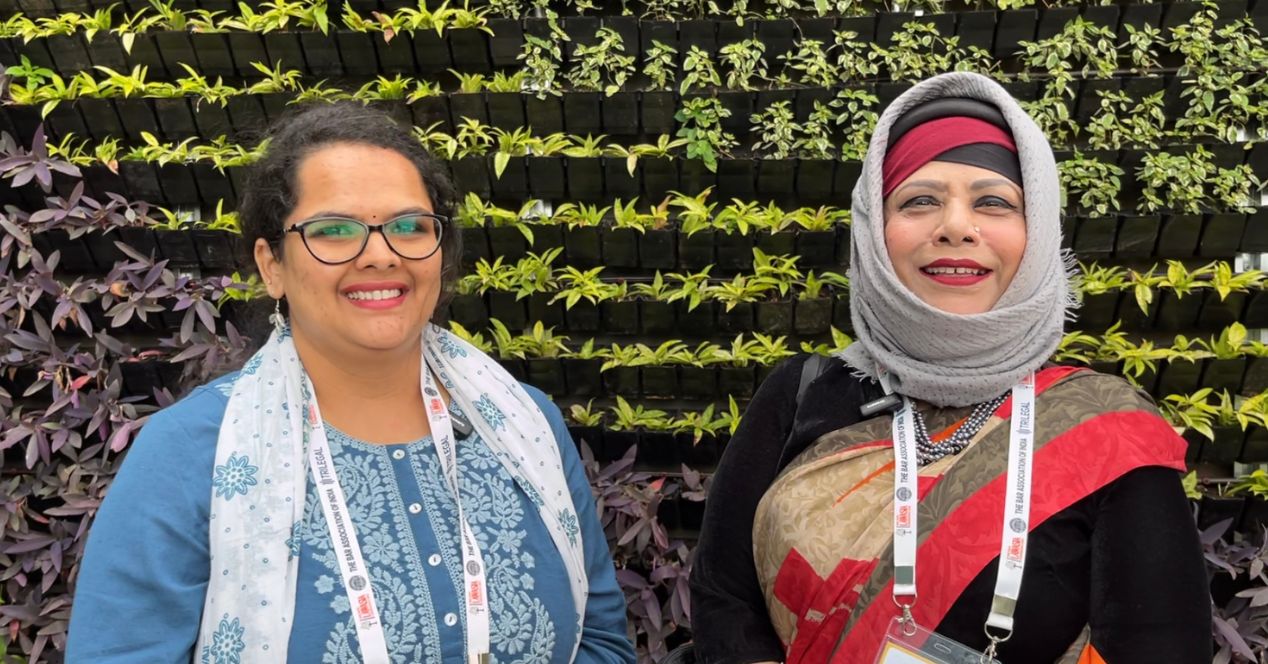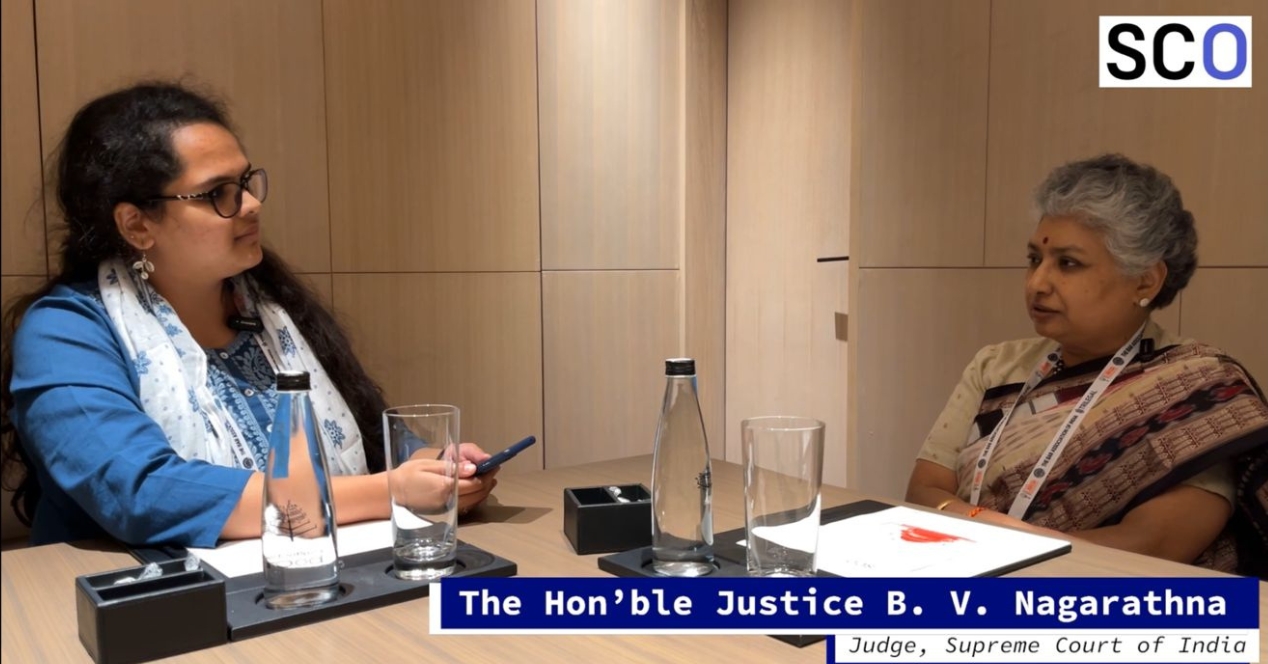Channel
“To maintain the independency of judiciary, it is better that we have a collegium”: Justice Sapana Malla
Justice Malla, Judge, Supreme Court of Nepal, discussed diversity, PILs, executive interference in the appointments of judges and more.
Transcript:
Hello everybody. Welcome to the Supreme Court Observer. I’m Gauri Kashyap and today I have with me Justice Sapana Malla of the Nepal Supreme Court. Thank you for being with us here today ma’am. I have a few questions to you about your experience as a judge and about some of the learnings that both our jurisdictions can have from one another. Let’s start at that point. You said your education was in India, you were in the Delhi University and so you’ve studied the law from here and you’ve had an extensive experience in Nepal in the legal field. What are some of the learnings of the two jurisdictions?
First of all, you know, learning social action litigation from Professor Baxi which we took back to Nepal and that was quite instrumental in creating accountability, especially challenging the law which was problematic for women. Other than that, the jurisprudence developed by the Supreme Court for years and years has inspired many of our judgments because you have one constitution and you have expanded the constitution. You gave constitution life through the interpretation, expanding many rights, which is a very good learning for us. Because in Nepal we have, with every political change, we have a new constitution. So we have not been able to mature the constitution. Whereas now we have an opportunity because the new constitution was made through the constituent assembly and the new constitution has even created a space for constitutional activism. We don’t even have to do the judicial activism. So, so much learning with how the judiciary has been functioning and because the education process, almost how law was enacted in a similar context.
Often in the body of the work of the judiciary, it’s crucial that it remains independent so as to not go head to head or enter the domain of other pillars of the constitution. What are some of the challenges you’ve faced in your jurisdiction with maintaining the independence of the judiciary?
See, of course there is a separation of power but there is also check and balance. So the constitution has given responsibility to judiciary, to check the executive action. So what we are doing is the constitutional functioning. Of course. I mean, we have to keep restraint. And again, like in Nepal, the whole appointment process of Supreme Court judges is so political. But judges and the court has been maintaining independency through its decision. And lately, two judgments on Parliament dissolve is a vibrant example of how independent judiciary is functioning in the country.
In India, the counterpart we have, the collegium system, what are your comments on that model of judicial appointment?
I mean there are both side arguments because here we are saying because there is a minister, there is a prime minister, representative in a judicial council, we have a chief justice, the seniormost judge and we have a law minister and bar representations it’s a five persons council. I mean we feel like depending on how they function—but to maintain the independence of judiciary it is better that we have a collegium.
So you have a vibrant body of work in women’s rights and both, as a lawyer prior to that as well, I’m sure you’ve carried some of that to your career as a judge as well. And diversity in the judiciary is a very often debated issue and I think there are several stages at which that diversity can be brought in. What are some of the key actions we can take?
Representation of diverse groups is critical because the experience of different suffering, putting our feet in the shoes of excluded group, marginalised group, disadvantaged group is critical. Representation matters. And therefore, I think from the law faculty, law school, from the education, we have to start, how to make sure that diverse groups are represented in the school, in the college. For example, in Nepal, we have limited women judges, we have limited women lawyers. But what hope we have is like right now in the law college, we have 70, 80% women. If you look at the examination, they are the top ten. Bar Council, top ten. So we have hope. But then the challenge we are finding in Nepal is high dropout of women after they come to the profession. So how to sustain them in the profession is a key challenge.
What are some of the struggles you faced? Because you’ve now—that dropout level, you’ve crossed that and you’ve entered the judicial profession. What are some of your experiences and what can we do to encourage women?
No, I think what we as a state, state organ, we need to create an enabling environment. Because women are equal, but they are different. They are different because of the social expectation, social construction. They are different because they have a different reproductive functioning. As a result, there is a huge disparity. So we need to recognise that women’s reproductive functioning is a state functioning. It’s not only for her. And to breach the disparity, diversity has to be recognised, inclusion has to be made. But inclusion along with the empowerment, because inclusion can create an enabling environment, external environment, bring the policy, but empowering internally is critical. So I think if we can have some special measure with this approach, representation can be ensured.
In the session earlier, you mentioned that you feel an added expectation from you as a woman judge. Can you tell us a little bit about your experience?
No, I mean, the added expectation is because I have been working for like 20 years on women’s rights. I was a women’s right activist. But that doesn’t mean—when you are a judge, you have to ensure impartiality, fairness. Of course, I’m gender sensitive. Gender sensitive does not mean I’m against any sex, any colour, any religion. So bringing that sensitivity is key. But still I cannot be prejudiced. So that expectation is a challenge because I cannot ignore the facts of the case. Secondly, also I’m seen as a threat because when I’m in a bench, they think, oh I will be always on the other side. It’s not that. So changing that perception and challenging that expectation is critical for me.
So to sort of re-center the expectation from a judge as oh, this is a woman judge and therefore she will judge in a certain way and to say no, this is a judge and they will behave in a nonpartial, fair way. You also mentioned that in your work you’ve changed over 100 laws in Nepal just through the public interest litigation jurisdiction of the court. In India, PILs are widely celebrated and used in many ways but it has received some criticism for opening the court’s doors too wide, which means that the court’s docket is suffocated and it’s not able to function as effectively as you can. What are your thoughts?
I mean, this question has also been raised in Nepal now. But when we initiated the case, we did not come only you know, just for the sake of PIL. Because before doing PIL, we did a detailed research. We did an audit of law that is discriminatory. And we did not only look at the racial discrimination. We even looked at the weakness and gaps and how that law is impacting women in society. So I think that evidence-based research and evidence based legal advocacy at the court made the difference because my most challenging case was marital rape case. They said we are challenging the marriage institution, we are being against religion. But the truth is that everyone has right to say “no” because even in marriage the relationship has to be consensual. So finally the court says rape is rape, no matter who is rapist, even her husband cannot get exempted from the punishment. And then now there is a law in place.
How do we then ensure that frivolous petitions don’t go to the Court? Because you said rigorous research is required and a lot of data-based and strong petitions need to go into the Court. But often frivolous petitions go into the Court and maybe even give PIL a bad name. From the judiciary’s point of view, from the bar’s point of view, how do we tackle that issue?
One is I think in the PIL also there is some interpretation, some jurisprudence has been made—how there has to be a substantial relation, substantial interest, who is filing the case. I mean, we have to be very careful while registering the case itself in the Court. So you have to check from the registration and even when the matters come before the bench, we need to carefully examine the interest. Why the case was brought—what is the interest behind those cases. So I think we need to be very careful in examining those kinds of matters.
Is there, do you think, any value in penalising frivolous petitions or would that discourage people from accessing the court?
I would not say—because penalising may discourage. Penalising can be misused, can be misused. So rather than that, scrutiny needs to be created and an educational programme has to be launched.
Well, thank you so much for your time and thank you for such wonderful answers to our questions. That is Justice Sapana Malla for Supreme Court Observer. Thank you.




